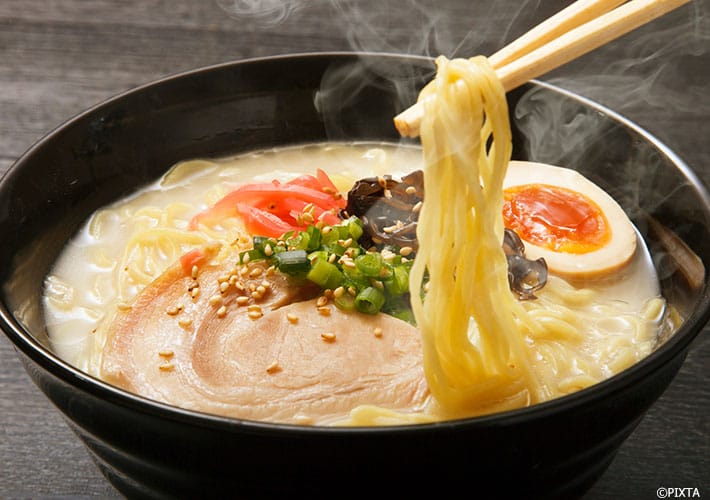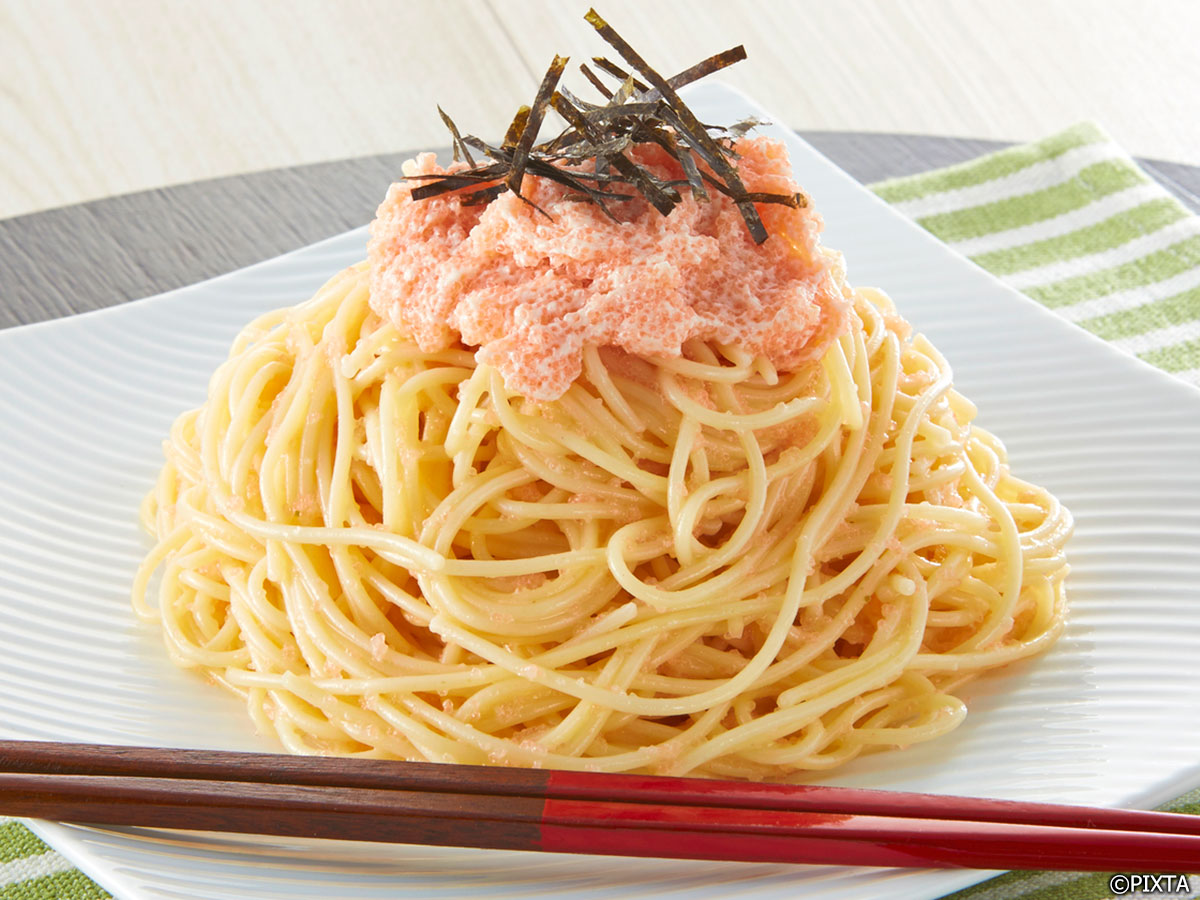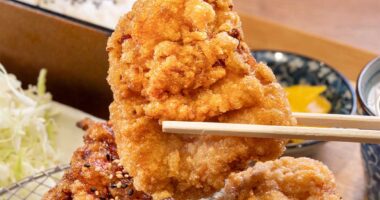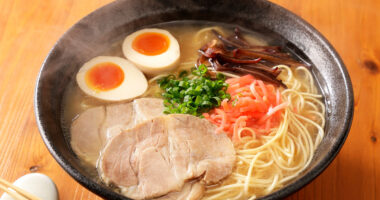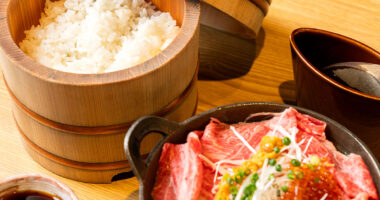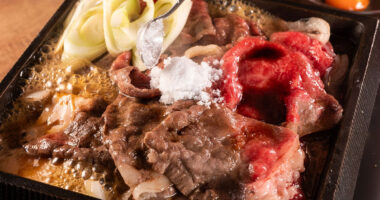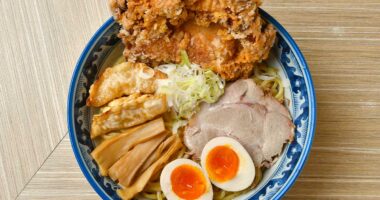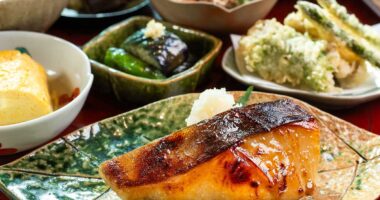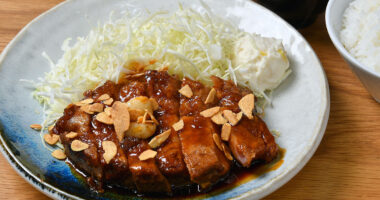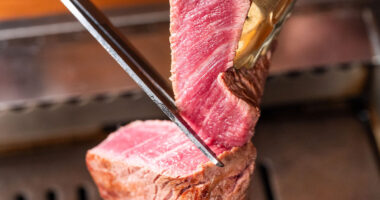Ramen (ラーメン) is a beloved Japanese noodle soup dish that has gained global popularity. Chances are you’ve heard the name before and perhaps even have a restaurant that serves it where you live.
What is ramen?
A bowl of ramen consists of Chinese-style wheat noodles served in a savory broth that is usually made from chicken or pork bones, miso paste, or soy sauce, although several other types exist. The broth is typically flavored with various spices and topped with ingredients such as チャーシュー chāshū (braised and sliced pork), メンマ mennma (lacto-fermented bamboo shoots), Welsh onions, and 海苔 nori (dried laver seaweed).
Where to get ramen
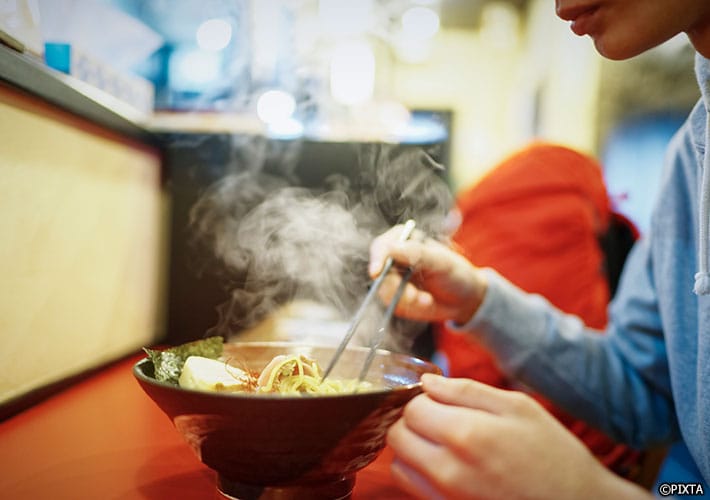
Enjoying a bowl of ramen at a mom-and-pop ramen shop.
Ramen can be found in a variety of places in Japan, from small mom-and-pop shops and street stalls to high-end restaurants. In big cities like Tokyo, Osaka, and Kyoto, there are entire neighborhoods dedicated to ramen, known as “ramen streets.” These areas are typically lined with dozens of ramen shops, each with its unique take on the dish. There are also numerous ramen restaurant chains, some of which have expanded outside of Japan.
The price of ramen can vary depending on the location and type of establishment. Generally, a bowl of ramen costs around 800 to 1,500 JPY, but it can be much cheaper or much more expensive depending on the restaurant’s quality and location.
Types of ramen
There are various types of ramen, each with its unique broth, noodles, and toppings. The most common ones are:
醤油ラーメン Shōyu Ramen: A soy sauce-based broth that is typically clear and light-bodied, often topped with chashu, menma and Welsh onions.
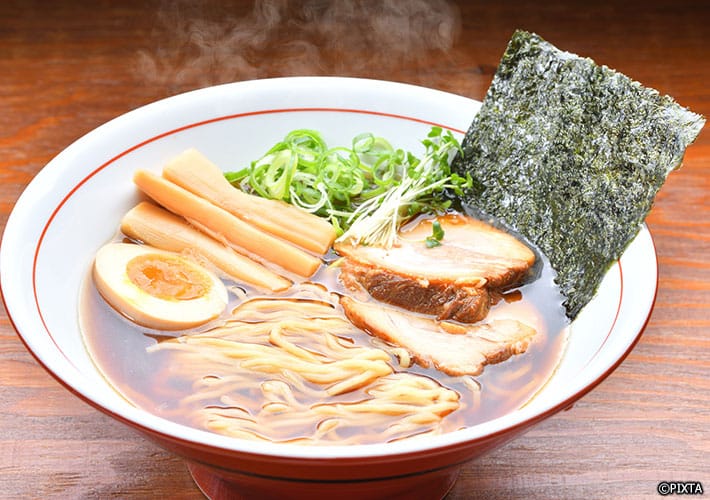
A bowl of shoyu ramen.
塩ラーメン Shio Ramen: A clear, light-bodied broth made from salt, typically chicken bones and kombu seaweed, and often flavored with seafood.

A bowl of shio ramen.
味噌ラーメン Miso Ramen: A thick and hearty broth made from miso paste, often topped with bean sprouts and corn.

A bowl of miso ramen.
とんこつラーメン Tonkotsu Ramen: A rich and creamy broth made from pork bones, topped with thinly sliced chashu, often soft-boiled egg, and other ingredients. One of the most popular styles of ramen, it was apparently invented in Kyushu in the 1930s but has spread to other parts of Japan in the last few decades.

A bowl of tonkotsu ramen.
つけ麵 Tsukemen: A type of ramen where the noodles are served separately from the broth, allowing the noodles to be dipped into the thick broth. A relatively new style of ramen that is not as common outside of Japan, tsukemen is growing in popularity, with specialty shops and even chains dedicated to it.
二郎系ラーメン Jirō kei Ramen: Inspired by the Jiro Ramen chain founded in Tokyo in 1968, Jiro kei ramen is known for its large portions, heaps of bean sprouts or other vegetables covering extra-thick noodles, and other toppings such as garlic and pork back fat.

A bowl of Jiro kei ramen with mounds of soy sprouts.
Tips for enjoying ramen
When enjoying ramen, there are a few tips to keep in mind to get the most out of your experience. First, just like udon and soba, slurping ramen noodles is not as taboo as it might be in other countries. In fact, it’s quite a common practice and has the advantage of cooling the noodles down so you can appreciate the flavor. Additionally, if you’re still hungry, you can get a 替え玉 kaedama, which is an extra serving of noodles. Although some tonkotsu ramen shops may offer it as a service, you shouldn’t expect a free refill for all ramen shops you visit.
Visiting a ramen shop in Japan may seem daunting for foreign guests. To help make your experience more enjoyable, it is useful to be aware of some common practices. For example, many ramen shops have vending machines at the entrance, where you pay in advance by buying tickets which you hand over to the staff. If you’re not familiar with the process, don’t hesitate to ask for help from the staff or other customers.

A ticket vending machine at the entrance to a ramen shop.
When it comes to ramen etiquette in Japan, there are a few key points to remember. Begin by savoring the soup to appreciate the chef’s effort in creating the broth. Although there’s no need to rush when you’re eating, begin eating promptly when served and leave promptly when finished, as this supports fast customer turnover in busy ramen shops. Place your chopsticks on top of the bowl when not using them. After finishing, place your bowl on the counter to assist the busy staff with the cleanup. Finally, to fully experience the intended flavor, try the ramen without condiments at first.

Don’t spend too much time taking photos of your ramen when it’s served.
In conclusion, ramen is an integral part of Japanese cuisine and a dish that should be on every food lover’s must-try list. With so many types and variations to choose from, there’s a bowl of ramen out there for everyone. So, the next time you’re in Japan, be sure to seek out a local ramen shop and enjoy this delicious and comforting dish.
